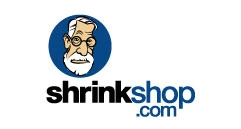Across the construction industry, heat shrink tubing has become an essential and versatile tool in the design and development of related applications.
Both single and dual wall heat shrink tubing is used to protect, insulate, identify, organize, and support wires and cables. Dual wall is used when more protection and insulation are needed. Formed as a singular thermoplastic cylinder, the tubing slides onto the wire as an outer shell and is then heated with a hot air gun to form a tight-fitting seal around the wire or cable.

Heat shrink tubing is available in various shrink ratios to accommodate different sizes of wires and cables. Common sizes are 2:1 and 3:1 ratios wherein the tubing shrinks to one-half and one-third of its original size when heat is applied. Using printed logos on heat shrink tubing is an added safety and security feature for construction projects.
Uses of Heat Shrink Tubing in Construction
Reinforcing Harness Systems
Heat shrink tubing can provide an extra layer of strain relief with webbing straps and buckles on construction harness systems. Heavy lifting of equipment, tools, and materials requires secure overlay to ease the strain, tension, and force used.
Protecting Electrical Components
Heat shrink tubing is designed to act as a protective coating for wires, sensors, and electrical connections. The durable material helps to resist damage due to impact, abrasion, and cutting. It allows a tight seal to shield the inner components from moisture, fluids, humidity, extreme temperatures, and ultraviolet light.
Securing and Organizing Cables
Within the construction industry, there are various scenarios where heat shrink tubing can be a safety measure to bundle and organize hazardous wires and cables to protect the workers and users. Having firm control over the handling of a group of wires and cables and the ability to safely grasp tubing can prevent dangerous situations. Cable and wire management is crucial to reduce the risk of entanglement and damage.
Sealing and Waterproofing
The sealing and waterproofing of wires, cables, terminals, and connectors help to ensure the safety and security of the components and the person handling the electrical system. A tight moisture-proof barrier can protect from sandblast, paint, asbestos particles, dust, and other construction debris. Environmental factors during construction can be linked to weather conditions and use of chemicals.
Repairing and Insulating
With time, usage, and environmental factors, wires and cables can become worn or redundant. Repair and/or replacement of the delicate features of the electrical system can be made easy with the use of heat shrink tubing. The tubing can be fitted over the new components for a protective cover. It also acts as an extra insulation layer of the wires and cables, in both indoor and outdoor applications.
Marking and Identification
Using color-coded heat shrink tubing to identify and mark wires, cables, and other components can safeguard from accidents and injuries during construction projects. Orange tubing is used as the universal sign of hazardous components. Using custom printed logo heat shrink tubing can precisely identify other wires and cables for quicker and safer access and handling.
Benefits of Heat Shrink Tubing in Construction
The construction industry involves commercial and residential projects, both of which involve service and production. Heat shrink tubing may be a small portion of the essential tools but it is valuable to maintain the safety and security of the electrical, plumbing, and mechanical devices. The durability of the thermoplastic can offer low maintenance and reliable protection. It also can be used as a flame-retardant insulator for covered components.
Challenges and Limitations
With all of the positive usages of heat shrink tubing in the construction industry, there can be challenges and limitations users need to be aware of.
The type of tubing material dictates the range of heating temperature guidelines to be used to prevent splitting or burn marks from developing on the tubing and wires. During the heat application, it is also important to evenly disperse the high temperatures to avoid wrinkling, chill marks, and sparsely attached tubing.
Choosing cheap heat shrink tubing materials can result in improper shrinkage as some tubing does not fully recover to the original dimensions as intended when heated. The shrink dimensions are crucial in having a safe and effective seal protecting and insulating the wires and cables. It is also important to remember the longitudinal shrinkage ratio, even if small, when heated.
Heat shrink tubing may offer durability but it can be pierced by extremely sharp edges or jagged corners as found on some electrical components. The tubing can be used to cover these areas when applied with careful attention.
Consider ShrinkShop’s Heat Shrink Tubing for Your Repairing and Marking Needs
For custom logo heat shrink tubing, talk to the experts at ShrinkShop. We have an extensive selection of tubing sizes, colors, and wall thickness for all your construction, electrical, plumbing, automotive, and telecommunications needs.
Our custom cut and printed heat shrink tubing is produced with state-of-the-art equipment for superior single and dual wall applications. We provide our North American customers the highest standard of product and service.
Contact us to discuss how our heat shrink tubing products and accessories can elevate your construction business.
